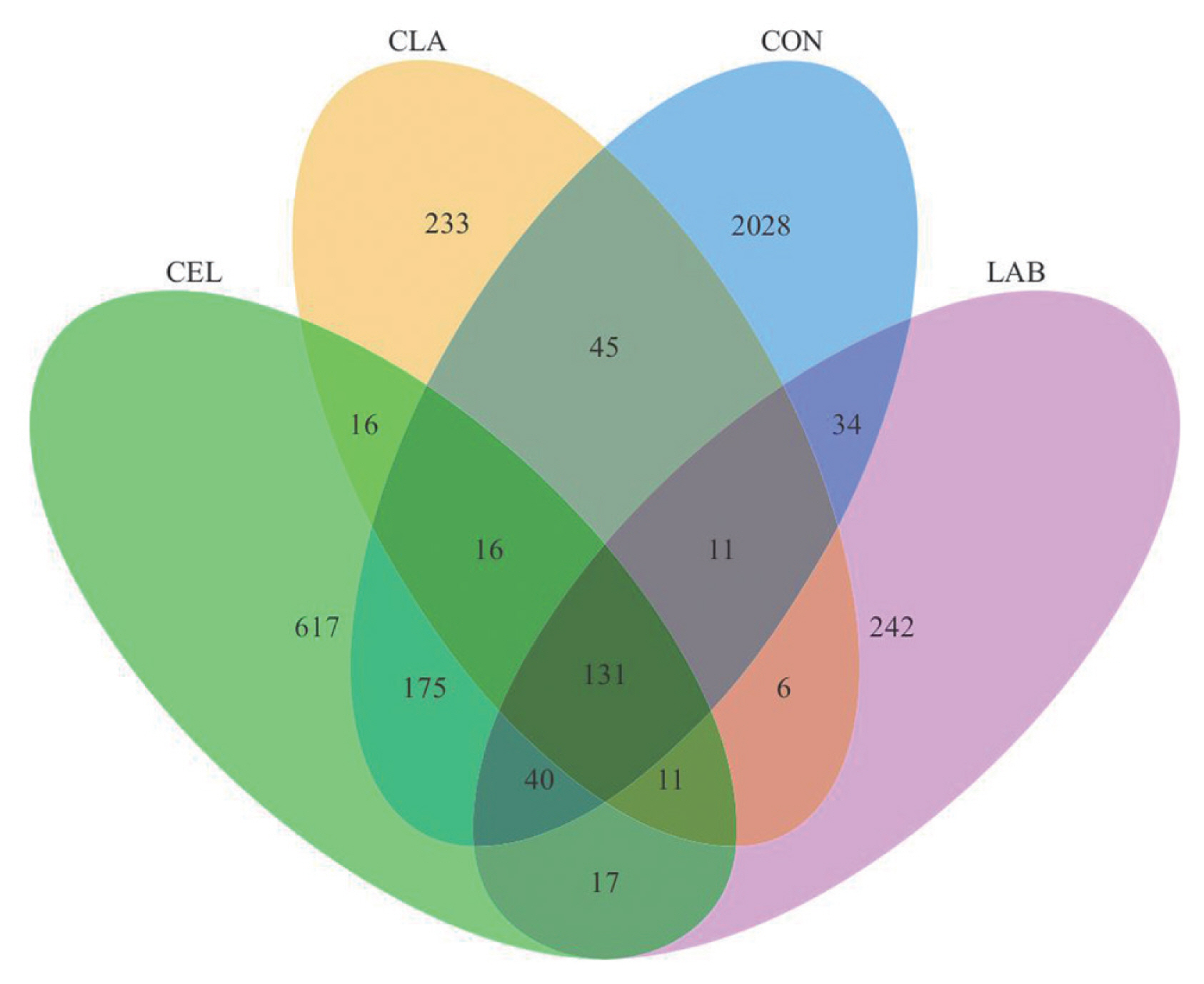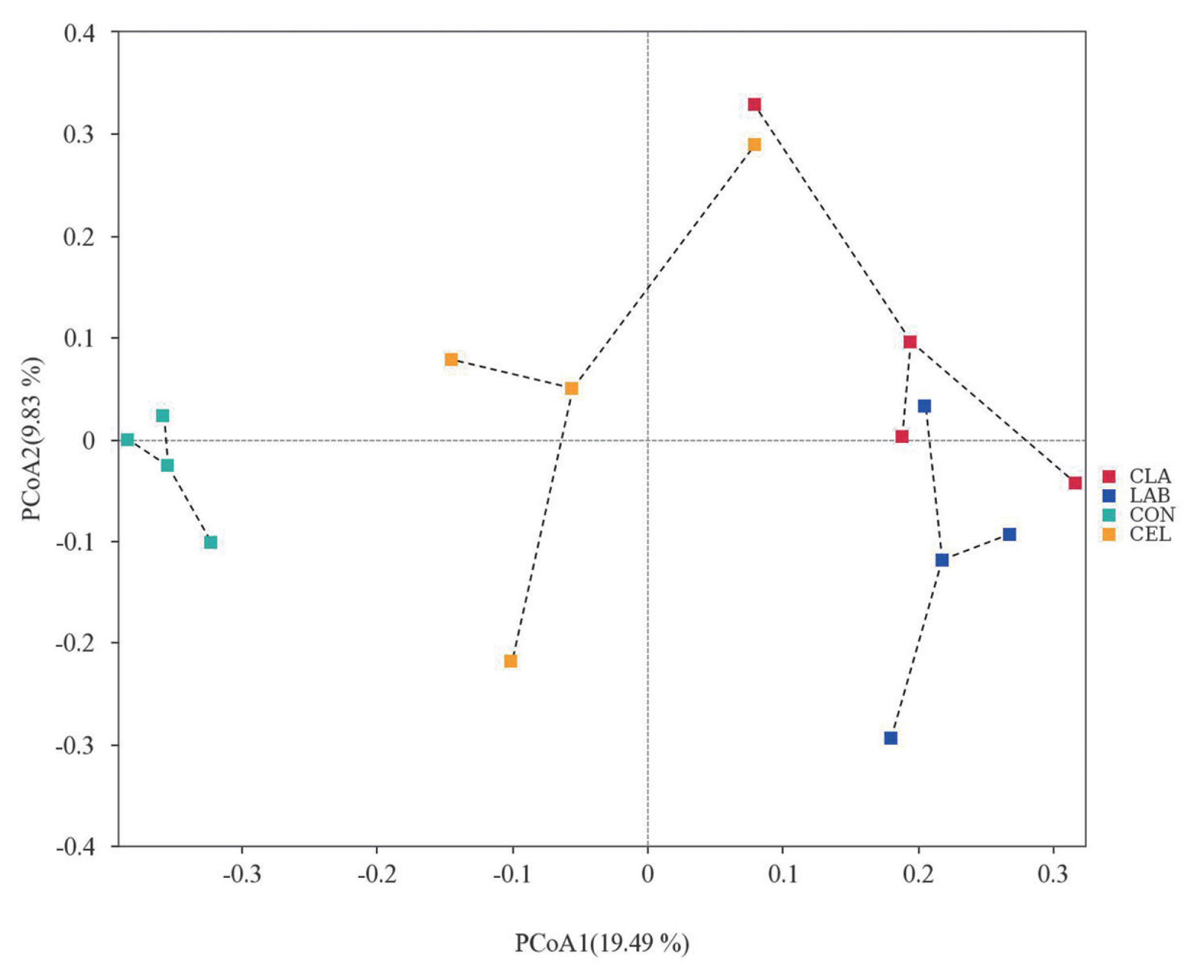2. Yan Y, Li X, Guan H, et al. Microbial community and fermentation characteristic of Italian ryegrass silage prepared with corn stover and lactic acid bacteria. Bioresour Technol 2019; 279:166ŌĆō73.
https://doi.org/10.1016/j.biortech.2019.01.107


4. Zhao S, Li G, Zheng N, Wang J, Yu Z. Steam explosion enhances digestibility and fermentation of corn stover by facilitating ruminal microbial colonization. Bioresour Technol 2018; 253:244ŌĆō51.
https://doi.org/10.1016/j.biortech.2018.01.024


5. Ni K, Zhao J, Zhu B, et al. Assessing the fermentation quality and microbial community of the mixed silage of forage soybean with crop corn or sorghum. Bioresour Technol 2018; 265:563ŌĆō7.
https://doi.org/10.1016/j.biortech.2018.05.097


6. He L, Zhou W, Wang Y, Wang C, Chen X, Zhang Q. Effect of applying lactic acid bacteria and cellulase on the fermentation quality, nutritive value, tannins profile and in vitro digestibility of Neolamarckia cadamba leaves silage. J Anim Physiol Anim Nutr (Berl) 2018; 102:1429ŌĆō36.
https://doi.org/10.1111/jpn.12965


8. AOAC International. Official methods of analysis. 19th edArlington, VA, USA: AOAC Int; 2012.
12. Olsen RA, Bakken LR. Viability of soil bacteria: Optimization of plate-counting technique and comparison between total counts and plate counts within different size groups. Microb Ecol 1987; 13:59ŌĆō74.
https://doi.org/10.1007/BF02014963


13. Guan H, Yan Y, Li X, et al. Microbial communities and natural fermentation of corn silages prepared with farm bunker-silo in Southwest China. Bioresour Technol 2018; 265:282ŌĆō90.
https://doi.org/10.1016/j.biortech.2018.06.018


14. Hu W, Schmidt RJ, McDonell EE, Klingerman CM, Kung L. The effect of Lactobacillus buchneri 40788 or Lactobacillus plantarum MTD-1 on the fermentation and aerobic stability of corn silages ensiled at two dry matter contents. J Dairy Sci 2009; 92:3907ŌĆō14.
https://doi.org/10.3168/jds.2008-1788


15. Mu L, Xie Z, Hu L, Chen G, Zhang Z. Lactobacillus plantarum and molasses alter dynamic chemical composition, microbial community, and aerobic stability of mixed (amaranth and rice straw) silage. J Sci Food Agric 2021; 101:5225ŌĆō35.
https://doi.org/10.1002/jsfa.11171


17. He L, Wang C, Xing Y, et al. Ensiling characteristics, proteolysis and bacterial community of high-moisture corn stalk and stylo silage prepared with Bauhinia variegate flower. Bioresour Technol 2020; 296:122336
https://doi.org/10.1016/j.biortech.2019.122336


18. Guo G, Yuan X, Li L, Wen A, Shao T. Effects of fibrolytic enzymes, molasses and lactic acid bacteria on fermentation quality of mixed silage of corn and hullessŌĆōbarely straw in the Tibetan Plateau. Grassl Sci 2014; 60:240ŌĆō6.
https://doi.org/10.1111/grs.12060

19. Arriola KG, Queiroz OCM, Romero JJ, et al. Effect of microbial inoculants on the quality and aerobic stability of bermudagrass round-bale haylage. J Dairy Sci 2015; 98:478ŌĆō85.
https://doi.org/10.3168/jds.2014-8411


20. Mu L, Xie Z, Hu L, Chen G, Zhang Z. Cellulase interacts with Lactobacillus plantarum to affect chemical composition, bacterial communities, and aerobic stability in mixed silage of high-moisture amaranth and rice straw. Bioresour Technol 2020; 315:123772
https://doi.org/10.1016/j.biortech.2020.123772


21. Ebrahimi M, Rajion MA, Goh YM, et al. The effects of adding lactic acid bacteria and cellulase in oil palm (Elais Guineensis Jacq.) frond silages on fermentation quality, chemical composition and in vitro digestibility. Ital J Anim Sci 2014; 13:3358
https://doi.org/10.4081/ijas.2014.3358

22. Hassanat F, Mustafa AF, Seguin P. Effects of inoculation on ensiling characteristics, chemical composition and aerobic stability of regular and brown midrib millet silages. Anim Feed Sci Technol 2007; 139:125ŌĆō40.
https://doi.org/10.1016/j.anifeedsci.2007.01.005

23. Li J, Yuan X, Desta ST, Dong Z, Mugabe W, Shao T. Characterization of Enterococcus faecalis JF85 and Enterococcus faecium Y83 isolated from Tibetan yak (Bos grunniens) for ensiling Pennisetum sinese. Bioresour Technol 2018; 257:76ŌĆō83.
https://doi.org/10.1016/j.biortech.2018.02.070


24. Kung L, Shaver RD, Grant RJ, Schmidt RJ. Silage review: Interpretation of chemical, microbial, and organoleptic components of silages. J Dairy Sci 2018; 101:4020ŌĆō33.
https://doi.org/10.3168/jds.2017-13909


25. Ogunade IM, Jiang Y, Kim DH, et al. Fate of Escherichia coli O157:H7 and bacterial diversity in corn silage contaminated with the pathogen and treated with chemical or microbial additives. J Dairy Sci 2017; 100:1780ŌĆō94.
https://doi.org/10.3168/jds.2016-11745


26. Romero JJ, Zhao Y, Balseca-Paredes MA, Tiezzi F, Gutierrez-Rodriguez E, Castillo MS. Laboratory silo type and inoculation effects on nutritional composition, fermentation, and bacterial and fungal communities of oat silage. J Dairy Sci 2017; 100:1812ŌĆō28.
https://doi.org/10.3168/jds.2016-11642


27. Yuan XJ, Dong ZH, Li JF, Shao T. Microbial community dynamics and their contributions to organic acid production during the early stage of the ensiling of Napier grass (Pennisetum purpureum). Grass Forage Sci 2020; 75:37ŌĆō44.
https://doi.org/10.1111/gfs.12455












 PDF Links
PDF Links PubReader
PubReader ePub Link
ePub Link Full text via DOI
Full text via DOI Download Citation
Download Citation Print
Print





